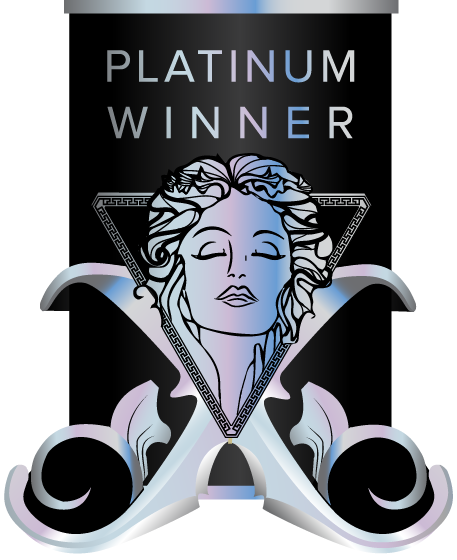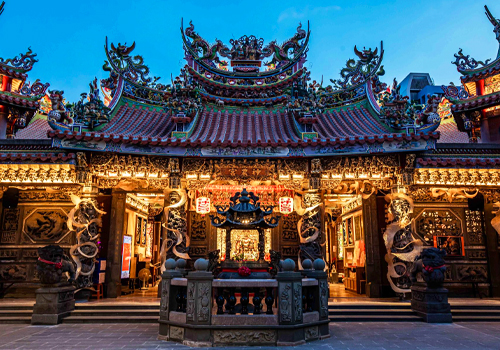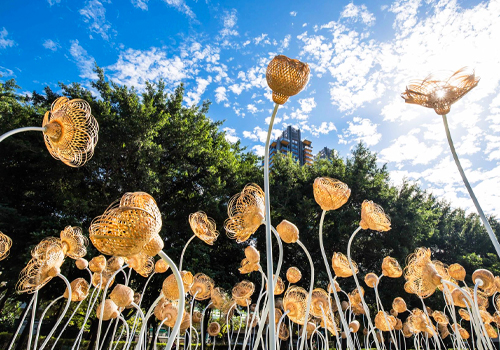
Interview
ChingKe Lin
1 Congratulations on winning the MUSE Design Awards! Can you introduce yourself and share about what inspired you to pursue design as a career?
I am ChingKe Lin, a bamboo craft artist from Taiwan. Through my work with bamboo, I explore the relationship between humans and nature, seeking new possibilities between traditional craftsmanship and contemporary design. My creations not only emphasize the structural aesthetics of bamboo but also challenge conventional perceptions of the material, allowing it to express fluidity and poetry within a space. My journey into this field was sparked by a pure curiosity about bamboo. It is both resilient and flexible, capable of adapting to environmental changes and dancing with the wind, embodying a unique vitality. This natural beauty, along with the boundless potential of bamboo’s malleability, fuels my creative passion. Through bamboo craftsmanship, I hope to inspire people to experience its spirit and warmth while reflecting on the connection between humanity and nature.
2 What does being recognized in the MUSE Design Awards mean to you?
For me, this is not only an honor but also a source of encouragement, strengthening my commitment to exploring the intersection of bamboo craftsmanship and contemporary art. This award is not just a recognition of my personal work—it also represents the potential of bamboo craft on the global design stage, allowing more people to appreciate its unique aesthetics, versatility, and cultural significance. I have always believed that design is more than just formal innovation; it is a dialogue with the environment, materials, and people's way of life. Bamboo, with its resilience, flexibility, and vitality, bears the marks of time while remaining open to reinterpretation in a modern context. This award reinforces my confidence in continuing to create new narratives through bamboo craftsmanship, showcasing the renewed value of traditional materials in contemporary spaces.
3 How has this achievement impacted your career, team, or agency, and what opportunities has it brought so far?
This achievement is not only a recognition of my personal work but also brings greater attention to bamboo craftsmanship in contemporary design. It inspires me and my team to continue exploring the possibilities of this material, fostering more cross-disciplinary collaborations and showcasing the renewed value and influence of bamboo craftsmanship on the international stage.
4 What role does experimentation play in your creative process? Can you share an example?
Experimentation is at the core of my creative process, allowing bamboo to break free from traditional frameworks and reveal new possibilities. I constantly explore the limits of bamboo through different weaving techniques, structural designs, and spatial dialogues. For example, in my work Incense, I employed the "circular mouth weaving" technique, transforming traditional lantern craftsmanship into layered, overlapping spiral forms that create a visual effect reminiscent of drifting clouds and mist. This experimentation not only redefines the structural language of bamboo but also opens up new interpretations between religious symbolism and contemporary art.
5 What's the most unusual source of inspiration you've ever drawn from for a project?
One day, during drastic temperature changes between heat and cold, I unexpectedly discovered that bamboo strips emit a crisp sound as they expand and contract. This natural phenomenon reminded me of the fleeting moment when firecrackers are set off during traditional Chinese festivals. Inspired by this, I created Fireworks, a structure composed of numerous bamboo strips that subtly bounce and produce sounds through thermal expansion and contraction, mimicking the dynamic energy of fireworks. This interplay of "sound and movement" inherent in the material became an integral part of the artwork, offering a new sensory experience in bamboo craftsmanship.
6 What’s one thing you wish more people understood about the design process?
I hope more people understand that design is not just about formal innovation, but rather a dialogue between materials, space, and people. In bamboo craftsmanship, every bend, weave, and structural choice results from countless experiments and adjustments, ensuring that the natural rhythm of bamboo harmonizes with contemporary contexts. The essence of design is not only to create beauty but also to explore the potential of materials and, in the process, bridge tradition with the future.
7 How do you navigate the balance between meeting client expectations and staying true to your ideas?
In my creative process, I begin by deeply understanding the client’s core vision and needs, identifying points of connection with my own design perspective. This allows our values to merge within the work. I believe that the aesthetics and spirit of bamboo craftsmanship can showcase its uniqueness in various settings.
8 What were the challenges you faced while working on your award-winning design, and how did you overcome them?
When creating "Incense" and "The Thank You Bouquet", my biggest challenge was how to convey deep cultural meaning and emotion through bamboo craftsmanship. For Incense, the goal was to showcase the contemporary aesthetics of bamboo within a traditional temple setting while preserving the solemn atmosphere of religious rituals. I had to consider how the woven bamboo structure could resonate with the space, ensuring that the work was not just a visual installation but also a medium that guided worshippers into a state of reflection and prayer. The Bowing Gratitude Basket highlights the flexibility and sensitivity of bamboo, symbolizing respect for those who selflessly give. The challenge was to shape the resilient material into delicate, floral forms that exude warmth and grace while maintaining structural stability for outdoor display. Both works required me to balance material, space, and narrative. Through continuous experimentation and refinement, I sought to push bamboo craftsmanship beyond traditional boundaries, exploring new modes of artistic expression.
9 How do you recharge your creativity when you hit a creative block?
When I encounter creative blocks, I step away from my work and explore different craft techniques, seeking inspiration from nature and tradition. I also engage in cross-disciplinary exchanges—such as conversations with creators in architecture, art, and design—allowing diverse perspectives to spark new ideas. Sometimes, experimenting with new weaving methods or material combinations—or simply immersing myself in the meditative process of weaving—helps me rediscover the possibilities of bamboo and opens up new creative horizons.
10 What personal values or experiences do you infuse into your designs?
My design is deeply influenced by my observations of nature, my exploration of bamboo craftsmanship, and my reflections on the relationship between humans and the environment. I believe that materials carry their own language; therefore, my creations respect the inherent qualities of bamboo, following its flexibility and tension rather than forcing it into shape. At the same time, I integrate playfulness and storytelling into my designs, ensuring that my works are not just static installations but interactive experiences that engage both space and viewers. Moreover, childhood memories of bamboo dragonflies, woven bamboo objects, and my observations of bamboo growing in the mountains have given me an understanding of its vitality and sense of time. These experiences translate into movement and layering within my work. Through design, I seek to break conventional perceptions of bamboo, revealing its potential in contemporary spaces while allowing people to experience the warmth and poetry of bamboo craftsmanship.
11 What is an advice that you would you give to aspiring designers aiming for success?
I would encourage aspiring designers to maintain a keen awareness of materials, craftsmanship, and the environment, while also embracing experimentation and exploration. Design is not just about formal innovation—it is a way of engaging in dialogue with the world. Understanding the characteristics of materials, cultural contexts, and spatial relationships can add depth and impact to one’s work. Moreover, staying true to your creative language is essential. Challenges and doubts are inevitable along the journey, but only through continuous refinement and experience can a designer develop a distinctive voice and discover meaningful connections with the world.
12 If you could collaborate with any designer, past or present, who would it be and why?
I would love to collaborate with Tadao Ando. His design language is pure and powerful, creating deeply spiritual architecture through the interplay of light, space, and materials. I have always believed that bamboo craftsmanship is not just a technical skill but also a way of exploring the relationship between space and nature.
13 What's one question you wish people would ask you about your work, and what's your answer?
I hope people ask me: “How can bamboo craftsmanship create new possibilities in contemporary design?” Bamboo carries deep cultural significance and remarkable resilience, but it should not be seen solely as a symbol of traditional craftsmanship. I want people to focus on its application in modern design contexts—how it can, through new structures, techniques, and spatial thinking, reveal future possibilities and even reshape our understanding of materials.



